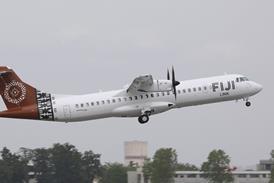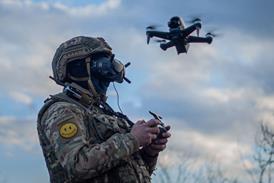 If feasible, the company would offer the new design - now known as the C-17A Plus - to the US Air Force for production after 2012. Discussions with suppliers and USAF "senior leadership" began about six months ago, but a final decision could still be a year or more away, says Ron Marcotte, Boeing C-17 programme manager.
If feasible, the company would offer the new design - now known as the C-17A Plus - to the US Air Force for production after 2012. Discussions with suppliers and USAF "senior leadership" began about six months ago, but a final decision could still be a year or more away, says Ron Marcotte, Boeing C-17 programme manager.The new aircraft design hinges on the success of three major changes - integration of a third landing gear; redesigned power flaps; and improved engine performance by 7-15%, says Marcotte.
The extra landing gear would weigh an estimated 6,000lb (2,724kg) and be mounted on the fuselage centerline between the existing pair of main landing gear units. This would retract into a small area of the lower lobe of the cargo bay, but leave the C-17's large main payload area undisturbed.
Pratt & Whitney engineers have informed Boeing that even a 7% thrust increase in the F117-PW-100 powerplant is enough to achieve the potential project's goals, says Marcotte.
Boeing's engineering studies are focused on making its flagship airlifter a more tactical asset. The aircraft already is able to land on many austere landing strips, but can't duplicate the C-130J's ability to takeoff and land on runways shorter than 3,000ft. Boeing is aiming to make the C-17 able to takeoff and land within 2,000ft.
The study continues as the US military considers boosting the total order for C-17s from 180 to at least 222 aircraft. Marcotte says the new variant would be introduced after the last of the 222-aircraft order is delivered.
Source: Flight Daily News























